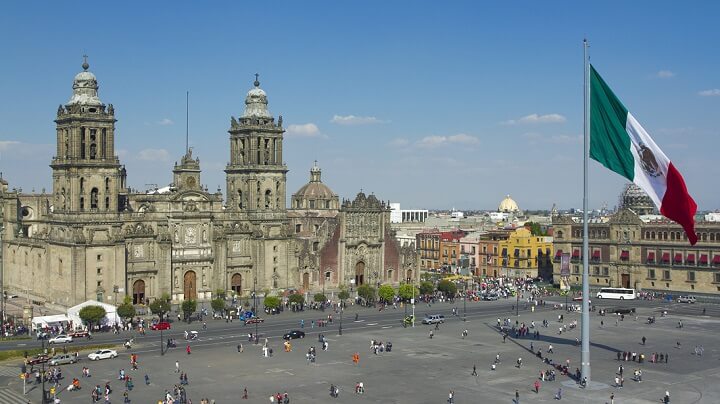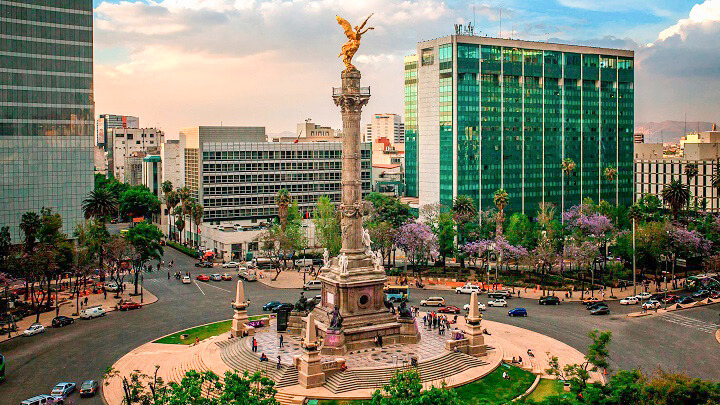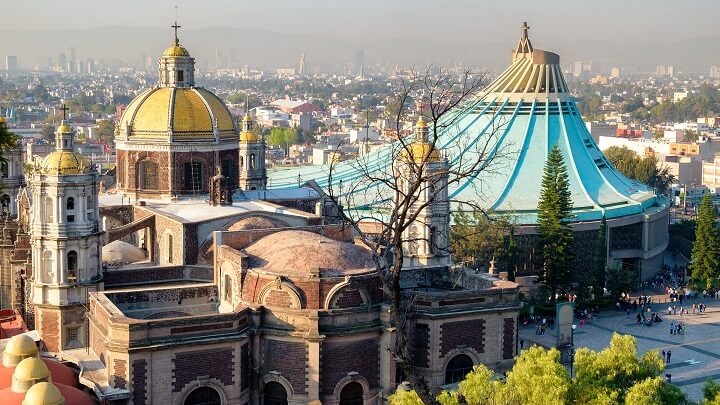
Mexico City is the capital of Mexico, it has a population of almost 9 million inhabitants and is located more than 2,000 meters above sea level. During 2019 it received around 14 million tourists, who came to learn about the local culture, enjoy its gastronomy and explore its most unique corners. If you are going to travel to the city, you cannot miss the opportunity to play roulette online for pesos , attend a wrestling show and visit these 8 emblematic points.
Chapultepec Forest
It is an urban park of 678 hectares and is considered the lung of the city. Mexican culture considers it a sacred place. Proof of this are the more than 4,000 archaeological objects that were found in it.
Inside there are three artificial lakes, a large number of fountains and spaces equipped for sports. In addition, it has 6 museums and several areas of cultural interest.
Constitution Plaza
Also known as El Zócalo. It is located in the middle of the Historic Center of the city and has an area of more than 46,000 m² . In its surroundings it is possible to find other singular points such as the Metropolitan Cathedral, the National Palace and other government buildings.
In addition to being a political symbol, it is a place chosen for a multitude of parties throughout the year.

Anthropology National Museum
It is located in the Bosque de Chapultepec and was completed in 1964. It has 22 permanent exhibits that show archaeological remains of the Mesoamerican peoples. Among them are the Piedra del Sol, the Monolith of Tláloc and the tomb of Pakal.
In addition, it has two more rooms that are used for temporary exhibitions and a space dedicated to the National Library of Anthropology.
Central mall
It is a huge park of around 90,000 m² located in the Historic Center . Here you can see emblematic sculptures such as the Gladiator with a Sword or the Monument to Beethoven, and famous fountains such as Neptune and the Tritons or that of the Americas.
Basilica of Santa Maria de Guadalupe
It is a temple designed by the architect Pedro de Arrieta, which was completed in 1708. It is framed in the Plateresque Baroque style and stands out for the tile mosaics located in the upper part of its towers. Over the years it underwent repairs and remodeling in various elements, such as the placement of a Carrara marble altarpiece or monumental paintings on the walls.

San Ángel neighborhood
It is located to the south of the city and stands out both for its monuments and for its markets . Two of the most important are Las Flores and the Melchor Múzquiz Market. In them you will find samples of crafts, flowers and food stalls. In addition, in this area the Flower Fair is celebrated on July 16.
Among the most outstanding architectural elements are the Casa de los Foaga, the Casa de la Marquesa de Selva Nevada, the Casa Azul and the Ex Colegio de San Ángel.
Vasconcelos Library
It was designed by the architects Alberto Kalach and Juan Palomar , and it was inaugurated in 2006. It has a catalog of more than half a million books, organized according to the Dewey System. It can be consulted on its official website. The building is located on an area of more than 38,000 m² surrounded by a huge botanical garden.
Monument to the Mexican Revolution
It is a 67 m high mausoleum designed by the architects Carlos Obregón and Émelie Bérnard. Originally it was going to be the Federal Legislative Palace, but its construction was interrupted with the Mexican Revolution. And in 1933 it was decided to use the part that was raised to build a monument commemorating the Revolution.
